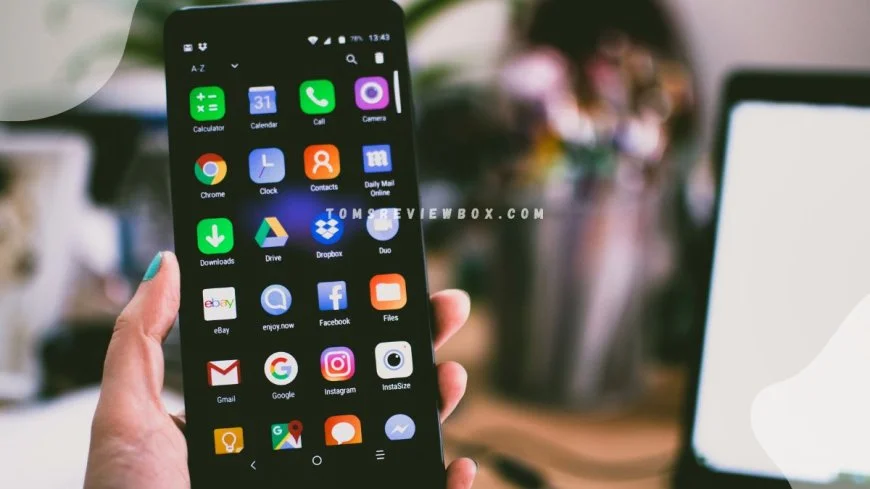How to Use Assistive Touch on iPhone: Quick Enable Guide
Discover how to use Assistive Touch on iPhone with our quick enable guide. Adjust volume, lock screen, use gestures, and more with just a tap.

Did you know that over 1 billion people worldwide live with some form of disability, accessibility feature? Accessibility features like Assistive Touch on iPhone can greatly improve user experience for individuals with disabilities. In this post, we'll explore how to use Assistive Touch on your iPhone, offering practical tips and step-by-step guidance to make the most of this valuable accessibility tool that allows you to tap, gesture, and navigate using your finger on the screen. Whether you're looking to simplify navigation, perform gestures with ease, or customize shortcuts, Assistive Touch can revolutionize how you interact with your device. Join us as we demystify the process and unlock the full potential of Assistive Touch, a gesture-based accessibility shortcut, for a more inclusive and user-friendly iPhone experience.
Understanding AssistiveTouch
Simplifies Navigation
AssistiveTouch function on iPhone serves to streamline device navigation, offering a virtual menu for quick access to various controls. Users can easily tap the AssistiveTouch button or gesture with their finger to perform functions like taking screenshots or adjusting volume settings.
By incorporating customizable gestures and shortcuts, AssistiveTouch simplifies the process of interacting with the device's interface. This feature enables users to tap on the screen and execute commands swiftly without the need for complex physical movements.
Enhancing User Experience
AssistiveTouch plays a crucial role in enhancing the overall user experience, particularly for individuals facing physical challenges. It provides a convenient alternative for accessing essential functions on the device, such as locking the screen or adjusting brightness using touch gestures.
Moreover, AssistiveTouch facilitates seamless interaction with the iPhone for users with limited dexterity or mobility. This feature empowers individuals to tap, touch, and use gesture on their devices effectively, promoting independence and accessibility.
Enable AssistiveTouch
Turn On
To enable AssistiveTouch on your iPhone, navigate to Settings, then Accessibility, and finally, AssistiveTouch. Tap the switch to activate it.
Voice Commands
By using "Hey Siri," you can easily tap gesture to activate AssistiveTouch without manually navigating through settings each time.
Accessibility Shortcut
For quick access, set up AssistiveTouch in the Accessibility Shortcut menu to tap and use gesture. This allows you to enable it swiftly whenever needed.
Navigate with AssistiveTouch
Gestures
AssistiveTouch on iPhone enables users to access Control Center, Notification Center, and more through touchscreen gestures. By simply tapping, swiping, or performing a multifinger gesture swipe, users can navigate their device without the need for physical touch button presses. For instance, a long press activates Siri, while a simple tap replicates the function of the home button.
Customization
One of the key features of AssistiveTouch is its ability to support a variety of multi-finger gestures. Users can customize the number of fingers required for certain actions within the AssistiveTouch menu. This customization allows for a more personalized and efficient user experience when interacting with the iPhone screen.
Accessibility Shortcuts
Customize AssistiveTouch Menu
Adjust Button Order
Customizing the AssistiveTouch menu allows you to arrange the menu button and its options in a way that suits your needs. You can easily tap custom actions and touch access top level menu features quickly. For instance, you can prioritize the most used functions by placing them at the top.
Assign Custom Actions
Assigning custom actions to the AssistiveTouch button enhances its functionality. By setting single-tap or long press gestures, you can streamline your touch interaction with the device. For example, assign a single tap to touch open the control center for convenient access.
Tailor Settings
Tailoring the AssistiveTouch menu through settings customization lets you create a personalized user experience. This involves adjusting assistivetouch options such as speak screen, adjusting dwell settings, and even restarting your iPhone using only the menu. By customizing these settings, you can make your device more accessible and user-friendly.
Create Custom Gestures
Select Gestures
AssistiveTouch on iPhone allows users to create custom gestures tailored to their needs. By recording new gestures through finger swipes, taps, and touch, users can personalize their device's interaction methods.
Save these custom actions to the AssistiveTouch menu for easy access. This feature enhances user experience by enabling quick execution of specific functions with a simple gesture.
Multifinger Gesture
Users can perform multifinger gestures by holding down on the screen and tapping with multiple fingers simultaneously. This functionality provides a convenient way to navigate through the device or trigger specific commands efficiently.
Use Pointer Devices
Connect Devices
To control the onscreen pointer with AssistiveTouch, connect a mouse or trackpad to your iPhone. This allows for improved accessibility and ease of navigation through the device's interface.
Enhance Accessibility
Utilize wired or Bluetooth accessories with AssistiveTouch to enhance precision and control over the onscreen pointer. This feature enables individuals with limited mobility to touch and operate their devices more effectively.
Pair Pointer Devices
Pairing a pointer device with AssistiveTouch features can significantly improve the user experience. By using virtual fingertips instead of physical buttons or dots, users can navigate their devices with greater ease and accuracy by touch.
Explore More Features
Additional Functionalities
Explore accessibility features on iPhone beyond AssistiveTouch. Users can customize accessibility settings to suit their needs, including button customization and screen adjustments. For individuals requiring specific actions, the device offers a variety of touch options.
The accessibility features, including touch, on Apple products cater to diverse user needs. Beyond the basic functionalities, users can access advanced settings for a tailored experience. By navigating to the device's settings, users can modify various aspects such as volume, actions, and icons.
Enhanced Selection Options
Users can choose from a plethora of customization options within the accessibility settings. From altering the default button actions to changing icon placements, individuals have the flexibility to personalize their device. This feature ensures a seamless experience for users with specific requirements.
-
Personalize button actions
-
Rearrange icon positions
-
Customize gestures for ease of use
Center of Information
The accessibility center serves as a hub for all customization options. Users can access this centralized location to modify settings related to volume, icon selection, and more. This centralized approach simplifies the customization process for enhanced user convenience.
Within the accessibility center, users can easily navigate through different sections to make desired modifications. Whether adjusting single or multiple settings, the interface provides a user-friendly experience. By offering a centralized platform, Apple enhances user accessibility across its product range.
Final Remarks
You've now mastered AssistiveTouch on your iPhone. You can navigate effortlessly, customize menus, and even create custom gestures. With these features at your fingertips, your device accessibility has been enhanced significantly. Remember to explore more features to make the most out of AssistiveTouch.
Take action today by implementing these tips and tricks. Embrace the power of AssistiveTouch and tailor it to your needs. Your iPhone experience will be revolutionized, making daily tasks smoother and more efficient. Share this knowledge with others to elevate their device accessibility too.
Frequently Asked Questions
How can I enable AssistiveTouch on my iPhone?
To enable AssistiveTouch on your iPhone, go to Settings > Accessibility > Touch > AssistiveTouch. Toggle the switch to turn it on. You can also customize the menu and gestures according to your preferences.
Can I customize the AssistiveTouch menu?
Yes, you can customize the AssistiveTouch menu by going to Settings > Accessibility > Touch > Customize Top Level Menu. From there, you can add, remove, or rearrange actions to suit your needs for quick access.
What are some ways I can navigate using AssistiveTouch?
You can navigate using AssistiveTouch by tapping the virtual Home button, accessing Control Center, adjusting volume, and more. It provides shortcuts for various functions without the need for physical buttons.
How do I create custom gestures with AssistiveTouch?
To create custom gestures, go to Settings > Accessibility > Touch > AssistiveTouch > Create New Gesture. Follow the on-screen instructions to record your custom gesture that can be used later for specific actions.
Is it possible to use pointer devices with AssistiveTouch?
Yes, you can use pointer devices like a mouse with AssistiveTouch. Connect the pointer device to your iPhone via Bluetooth or USB, then enable it in the Accessibility settings under Pointer Control for enhanced navigation.
What's Your Reaction?







































![MacBook Pro M5: All the features and specs you need to know [LEAKS REVEALED]](https://tomsreviewbox.com/uploads/images/202502/image_430x256_67bd6d7cd7562.jpg)


























